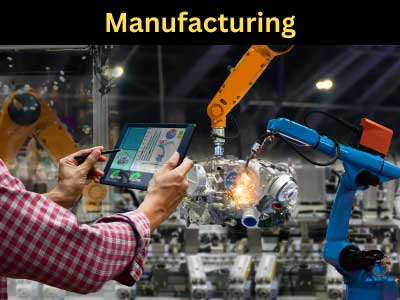Key Takeaway
To solve manufacturing costs, start by identifying key cost drivers such as materials, labor, and overhead. Streamlining processes can significantly reduce these costs. Upgrade to efficient machinery and train employees to maximize productivity. Reducing waste and reusing materials also help in cutting costs.
Negotiating better deals with suppliers is another effective strategy. Purchasing in bulk or securing long-term contracts can lower material expenses. Implement lean manufacturing principles to identify and eliminate inefficiencies. Regularly review and optimize your processes for continuous improvement, leading to lower manufacturing costs and higher profitability.
Analyzing Cost Structures in Manufacturing
Understanding the cost structure of your manufacturing process is the first step in reducing expenses. This involves a detailed analysis of all fixed and variable costs, from raw materials and labor to energy consumption and transportation. Breaking down these elements allows you to pinpoint where inefficiencies lie and where you can make strategic cuts.
For example, identifying which materials are most expensive and whether cheaper alternatives exist can significantly reduce overall costs. Similarly, reviewing labor costs can help determine if automating specific tasks might be more cost-effective in the long run. By fully understanding your cost structure, you gain the insight needed to make informed decisions on where to focus your cost-reduction efforts.

Identifying Cost-Saving Opportunities Through Data
Data analytics is one of the most powerful tools manufacturers have at their disposal for identifying cost-saving opportunities. With the right data in hand, you can track production efficiency, machine utilization, material waste, and labor productivity. Analytics helps to uncover hidden inefficiencies that may not be obvious on the production floor.
For example, tracking downtime on production lines can reveal patterns that are costing your business money. Perhaps certain machines are frequently breaking down or specific shifts are underperforming. Once you have this data, you can address the root causes of these issues, whether through equipment maintenance, retraining staff, or optimizing workflows.
Data-driven decision-making also helps manufacturers make better choices in inventory management. Knowing exactly how much inventory to maintain helps prevent overstocking or understocking, both of which can result in unnecessary costs. By using data to guide decisions, manufacturers can implement changes that have a direct impact on reducing costs.
Cutting Costs with Effective Supply Chain Management
Effective supply chain management is another crucial element in solving manufacturing cost issues. A well-optimized supply chain reduces delays, ensures that materials arrive just when they’re needed, and prevents the accumulation of excessive inventory. This not only cuts costs related to storage but also reduces the risk of waste through material obsolescence.
By maintaining strong relationships with suppliers, manufacturers can also negotiate better deals, bulk discounts, or flexible payment terms, all of which contribute to lowering production costs. Furthermore, diversifying suppliers can reduce reliance on a single vendor, ensuring that manufacturers have access to competitive pricing and avoid disruptions that could lead to costly delays.
Technology like supply chain automation and real-time tracking systems can help streamline the process even further. These tools provide visibility into the entire supply chain, allowing manufacturers to identify bottlenecks, predict potential disruptions, and optimize delivery schedules. When supply chains are running efficiently, manufacturers experience fewer delays and lower costs, leading to improved profit margins.
Reducing Waste and Scrap to Improve Margins
One of the most significant contributors to high manufacturing costs is waste—whether that’s excess material, defective products, or unnecessary energy consumption. Implementing strategies to reduce waste and scrap can have a considerable impact on improving profit margins.
Lean manufacturing techniques, such as Six Sigma, focus specifically on waste reduction by streamlining processes and ensuring that every part of the production process adds value. For instance, by improving precision during the production phase, manufacturers can reduce the number of defective or non-compliant products that need to be discarded. This not only saves on raw materials but also reduces labor costs associated with reworking defective products.
Moreover, reducing scrap also improves sustainability efforts, which can open doors to new markets where eco-friendly practices are valued. Adopting energy-efficient machinery and minimizing downtime can lead to significant cost savings, making waste reduction a top priority for cost-conscious manufacturers.
Implementing Technology to Streamline Manufacturing Costs
The role of technology in reducing manufacturing costs cannot be overstated. Automation, for instance, can drastically reduce labor costs by taking over repetitive or time-consuming tasks, allowing employees to focus on more value-added activities. Robotic systems, AI-driven equipment, and smart manufacturing systems also ensure that production runs smoothly, with fewer errors and less downtime.
In addition, predictive maintenance technologies help prevent costly equipment failures by predicting when a machine will break down before it happens. This allows manufacturers to perform maintenance during planned downtime rather than losing valuable production time to unexpected repairs.
Software solutions like Enterprise Resource Planning (ERP) systems further help manufacturers optimize their operations by integrating all aspects of the business—inventory, production schedules, and supply chains—into one cohesive system. This integration reduces duplication of effort and improves decision-making, which in turn lowers operational costs.
By leveraging the latest technology, manufacturers can streamline processes, improve efficiency, and ultimately reduce their overall production costs.
Conclusion
Reducing manufacturing costs requires a multi-faceted approach, from analyzing cost structures and identifying savings through data to optimizing supply chains, reducing waste, and implementing cutting-edge technology. Each strategy plays a critical role in solving the challenges associated with high production costs. The key is to approach cost reduction holistically, ensuring that every area of the business contributes to long-term financial sustainability. By continuously monitoring and optimizing each part of the production process, manufacturers can achieve cost savings that boost profitability and help them remain competitive in an ever-evolving industry.
